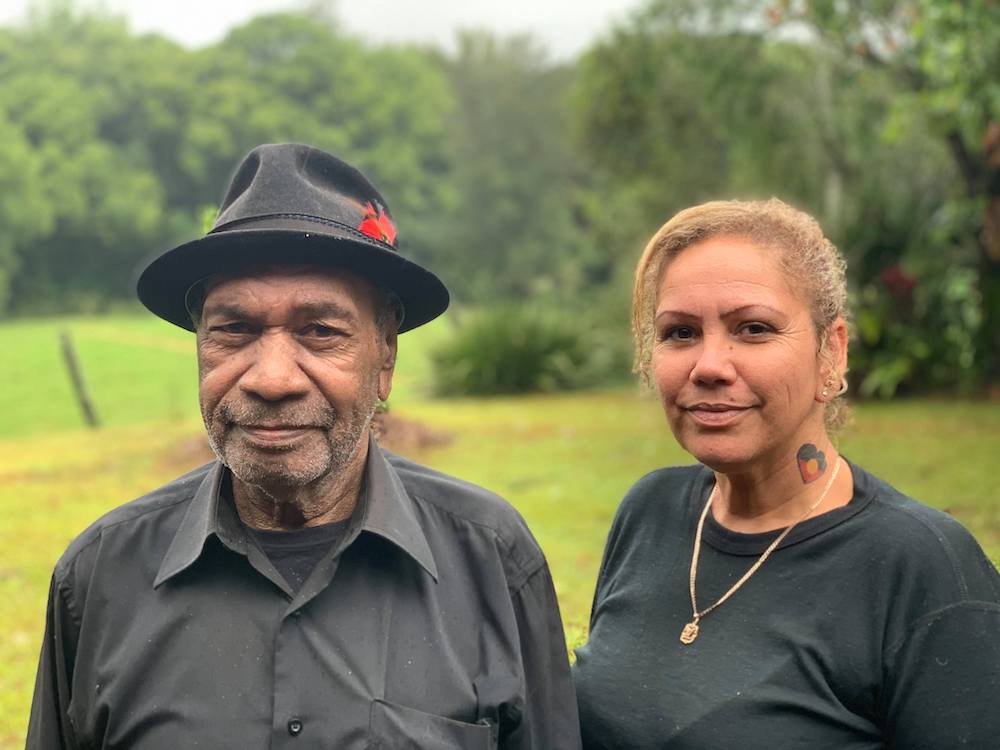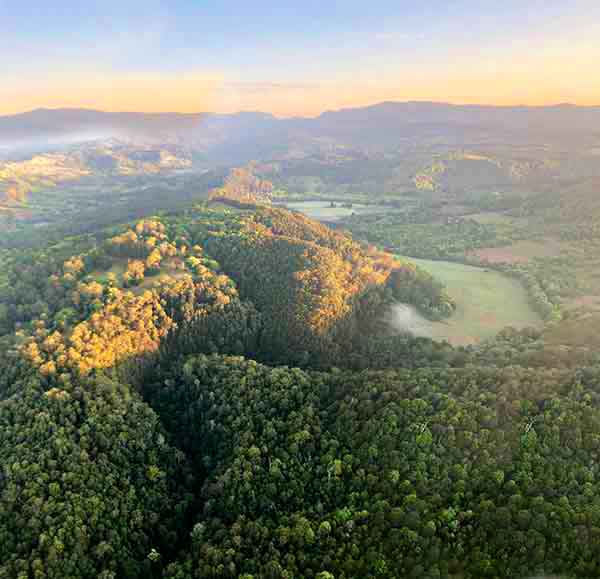Cultural Heritage Impact
R
From Media Release by Widjabul Wia-bal December 2020
Widjabul Wia-bal Traditional Owners have told Rous County Council General Manager, Phil Rudd, that they do not accept the building of the proposed Dunoon Dam. The dam would inundate ancient burial sites and extensive evidence of occupation in the past and in recent times.
John Roberts, a senior Elder of the Widjabul Wia-bal said, “I was one of the stakeholders consulted in 2011 about the impact of the Dunoon Dam on cultural heritage. In the 2011 Cultural Heritage Impact Assessment prepared for Rous, we stakeholders said with one voice that no level of disturbance was acceptable to us.
We still say that. Nothing has changed. There is no need for another study. Our opinion has not changed.”
“Our cultural heritage is a direct connection to our ancestors. We have been here for thousands of years. These sites provide us with a link to our traditions, our land and our living heritage. They allow us to educate our young ones in their history.”

Senior Elder, John Roberts, with niece Cindy Roberts
A unanimous decision of Elders and Widjabul Wia-bal people was given to the Rous General manager last Tuesday 8 th December. The group insisted that Rous County Council abandon plans for the Dunoon Dam. “So many of our cultural sites have
been destroyed. To destroy more is unacceptable to the Traditional Owners,” said Mr Roberts. “We are tired of being ‘consulted’ and then ignored. Enough is enough”.
The Widjabul Wia-bal collective insisted that Rous County Council no longer deals with individuals. In future Rous must consult with the whole stakeholder group.
Rous agreed to provide all correspondence between Rous and the Widjabul Wia-bal representatives since the dam was first mooted in 1995.
Barry Roberts, John Roberts’ elder brother, said that Rous County Council’s plans for the Dunoon Dam are the same as the Rio Tinto’s actions at the Juukan Cave in Western Australia. “We believe that the Australian people will not allow this destruction of our heritage to go ahead.”
The Widjabul people acknowledged the importance of walking together with the WATER Northern Rivers Alliance to protect the land and develop alternative water options.
WATER Northern Rivers Alliance stands with the Traditional Custodians
WATER Northern Rivers Alliance calls on Rous County Council and state water planners to respect the wishes of Widjabul Wia-bal people who have voiced their opposition to the proposed Dunoon Dam. The dam would obliterate important cultural heritage ancient burial sites.
On December 14, John Roberts, a senior Elder of the Widjabul Wia-bal stated that when he and other traditional custodians were consulted about the dam in 2011 they made it clear that no level of disturbance was acceptable.
“When Aboriginal people have unequivocally stated their objection to the dam, they should be listened to” said Nan Nicholson spokesperson for WATER Northern Rivers Alliance. “The pattern of trying to wear down Aboriginal people with repeated consultations is unacceptable. Rous did a Cultural Heritage Impact Assessment with a NO DAM answer in 2011. They conducted another report in 2013, and now it looks like they want to subject Widjabul Wia-bal people to yet another ‘consultation’ process. It’s starting to look like their aim is to keep going until they get the answer they want”.
“The bottom line is that this destructive dam is not necessary”, said Annie Kia “We have opportunities now that were not present when Rous set the Dunoon dam proposal in motion. The new approach to water is to spread risk across a portfolio of strategies, including some that don’t depend on rain. The change is evident in the NSW Productivity Commission Greenpaper that advises efficiencies and new sources such as purified recycled water. The new approach is spelt out in All Options on the Table from
the Water Services Association of Australia, in which dams are described as high-risk investments, and the case is made for innovation to ensure supply-demand balance. We encourage interested people to go to the Smart Water Options page on our website.”
“We urge Rous and its constituent councils to seize the new opportunities and create a water system fit for this century, a water system to be proud of. The alternative is a destructive dam that would inflict more suffering and loss on Widjabul Wia-bal people, destroy rare rainforest and help push koalas and platypus towards extinction. There is no pride in that, only shame. Let’s go for the first choice”.
The 2011 Cultural Heritage Impact Assessment (CHIA) document provides overwhelming evidence that this particular valley is of major significance for the Widjabal Wia-bal people.
The cultural meaning of this place is apparent not just in the artefacts and burial sites but in the ongoing living connection that local people have with this landscape.
The CHIA makes absolutely clear that “Aboriginal stakeholders are of the opinion that the sites should remain undisturbed and that no level of disturbance is considered acceptable, especially when concerned with impacts upon the burials, which they see serving as a direct link to the ancestors of the registered stakeholders”.
The evidence of burial sites in particular was a major factor in halting the dam last time it was proposed. This hasn’t changed. “Continuing to consult with Indigenous stakeholders” is just plain insulting when it is clearly code for “We will make a show of talking to you but will go ahead with our plans regardless of your wishes”.
In fact the word “stakeholder” is demeaning. It puts the Aboriginal custodians, who have been caring for this land for 1000’s of years, on a par with the driver of a concrete truck on a short-term contract.
The consultation process as laid out clearly in the CHIA has not been followed by Rous and the Aboriginal custodians rightly have little faith that their participation will have any meaningful outcome. No amount of consultation will convince the custodians that this place is not significant.
It is not too much of a stretch to say that this dam is the North Coast’s Rio Tinto moment. Aboriginal heritage is beyond valuing in monetary terms and must not be discarded just because it cannot be given a monetary value. The Juukan Caves were destroyed by Rio Tinto because they had no dollar value.
It is time to let the wishes of the Indigenous people prevail.

Looking north at dawn across Widjabul Wia-bal country, from The Channon Gorge to the Nightcap Range. Terania Creek valley on the left, Rocky Creek valley on the right. Photo: Balloon Aloft, Byron Bay.
“We need to keep and protect these places for future generations for these places are our Living Heritage.
These places are our connection to our ancestry and our ancestral understanding that our relationship is the very environment that holds our people together.
These places are learning grounds for future generations.
To destroy the living environment that sustained our lives is to destroy the lives of people and children and community.
We will never accept this.”
Uncle Roy Gordon, Widjabul Wia-bal, October 2020
